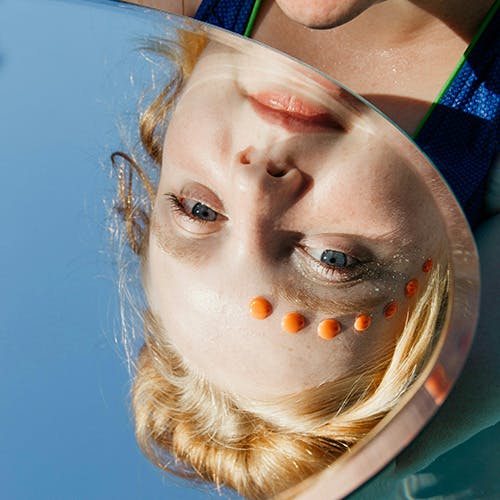belong to world
Covers as a Mirror: When Reinterpreting Becomes an Act of Identity
Music and fashion have always walked hand in hand—but have you ever thought that musical covers and clothing might also share something in common with corporate culture? Different worlds, yes, but united by a shared gesture: taking something that already exists and transforming it into something deeply personal.

Some songs seem carved into our collective memory. Not because they’ve always remained the same, but because they’ve been able to change skin. Tracks that span eras, generations, cultural contexts—finding new voices and new meanings. These are musical covers: reinterpretations that—without erasing the original—give it new life. And within that life, there’s always something profoundly personal.
A cover is never a copy. It’s a dialogue between past and present, between the original writer and the voice interpreting it today. It’s a creative act that begins with something existing and makes it one’s own—with a new perspective, a new rhythm, a new voice.
To perform a cover is to say: “I recognize what you are, but I can also show you who I am.” It’s like borrowing a melody to make it your own manifesto.
The same happens in fashion. Certain garments are true classics: the white shirt, the leather jacket, the trench coat. But each generation reinterprets them in its own way. Shapes, colors, and proportions change—and with them, so does the meaning.
The same is true in companies: in processes, in projects, in the classic “we’ve always done it this way.” Even there, reinterpretation is possible—and often necessary. Sometimes, all it takes is the fresh perspective of someone new to spark a change. Because bringing your own vision—even within a well-defined structure—is just as much a creative act as reinventing a song or an iconic piece of clothing.


At Teddy, we deeply believe in this process.
We create our collections as tools for personal expression: accessible, authentic, dedicated to those who want to feel represented in what they wear. And we view our company the same way: as a living, breathing reality—capable of evolving and transforming through the people who inhabit it. Every new team member brings a different way of seeing what already exists. And it’s precisely from there that new ideas, new approaches, and new directions can emerge. Imagining the Teddy of the future, starting from our history. Our values don’t change, our Dream doesn’t change—but perspectives can.
To reinvent a classic is to rewrite it without erasing the past—rather, to reread it with and through fresh eyes.
For a company like Teddy, born from a strong vision and grown over time thanks to solid roots, the future is never a rupture but a transformation.
Each new generation that enters the company finds a living structure—made of values, experiences, and insights already rooted. But it’s precisely in this shared heritage that the possibility to reinterpret is born.
Reinterpreting to Find Ourselves
A cover can speak to all generations, but each one reads it differently. Those who knew the original feel nostalgia; those discovering the new version find a connection. The song is the same, but the eyes (and ears) have changed. And that change depends a lot on the reinterpretation by the artists. Meraviglioso, written by Domenico Modugno, was reborn through Negramaro, who made it more intense, edgier, more their own. The same happened with A mano a mano, by Riccardo Cocciante, which took on a raw, poetic nuance in the voice of Rino Gaetano. Or take Whitney Houston, who transformed I Will Always Love You into a powerful and universal anthem—turning Dolly Parton’s intimate ballad into a declaration of liberation. In music, a text can evolve from sweet ballad to rock anthem.
In fashion too, certain forms always seem to return, but each time with a different twist. Think of the leather jacket: a symbol of rebellion for James Dean and Marlon Brando, later reinterpreted by luxury brands in a tailored version—or deconstructed into oversized silhouettes for newer generations. Or denim: originally a symbol of practicality and hard labor in the Old West, then adopted by the youth culture of the '60s as a sign of independence, later transformed by high fashion brands into refined, trend-setting pieces—ripped, bleached, and reshaped for contemporary styles. The same item, a thousand meanings. For Teddy, this is the real creative challenge: not just inventing something never seen before, but making what already exists resonate with a new voice—one that is inclusive, distinctive, and recognizable. A trench coat can speak of elegance. A sweatshirt can express comfort. A pair of jeans can shout independence.

A reinterpreted garment—like a cover—is an act of introspection. It requires listening deeply to what came before, but also understanding what it can still say to those who wear it today. It’s an act of both listening and self-affirmation: “This is my version. This is who I am, today.” Just like reimagining life inside a company, seeking change within the continuity of enduring values.
At Teddy, to reinterpret means staying tuned to the present—capturing its nuances, and translating them into collections that can speak to diverse generations united by the desire to express themselves. And the same goes for how we look at our company: open to change, ready to embrace new voices that—like a well-made cover—don’t erase the original identity, but offer it a new perspective.